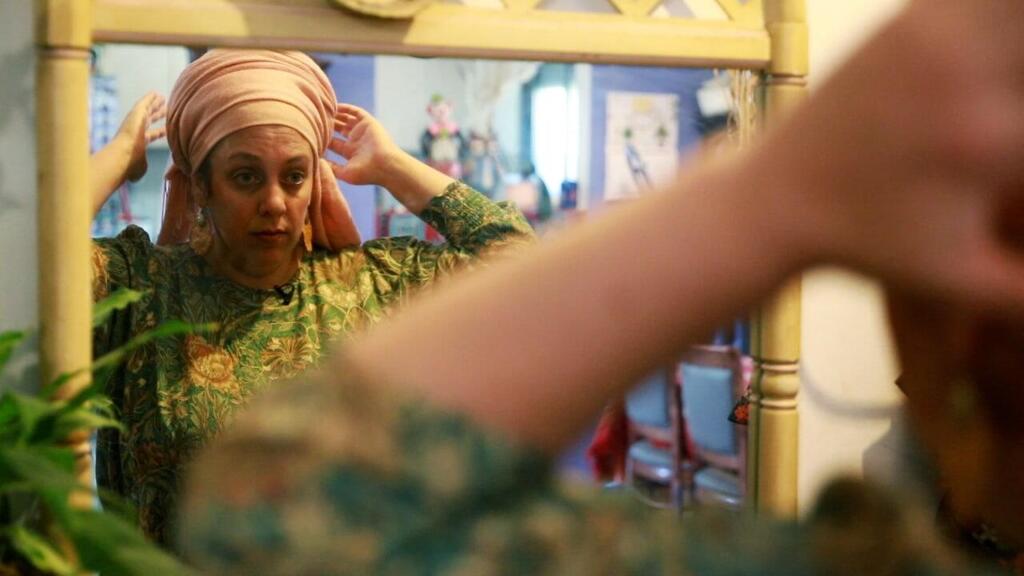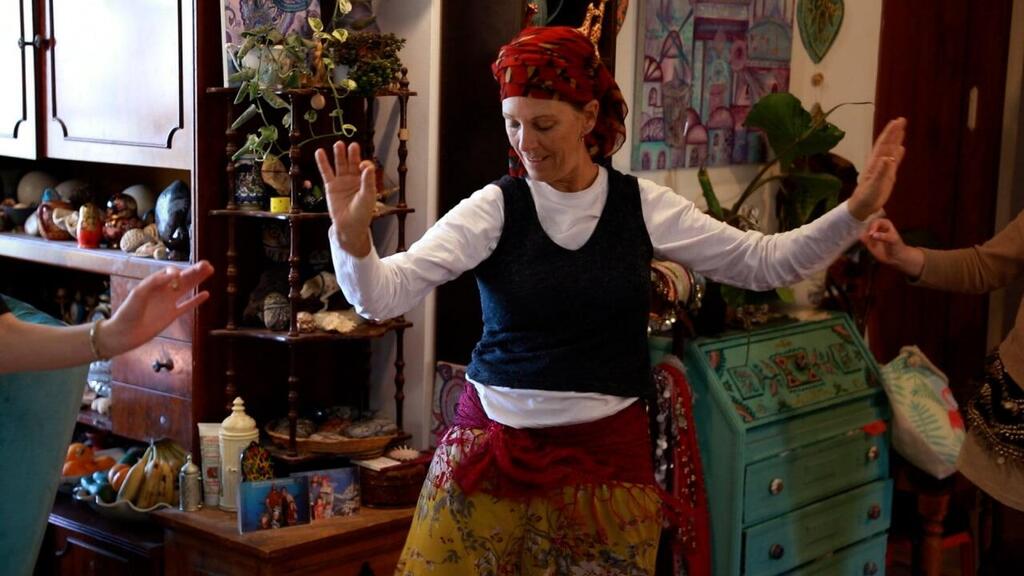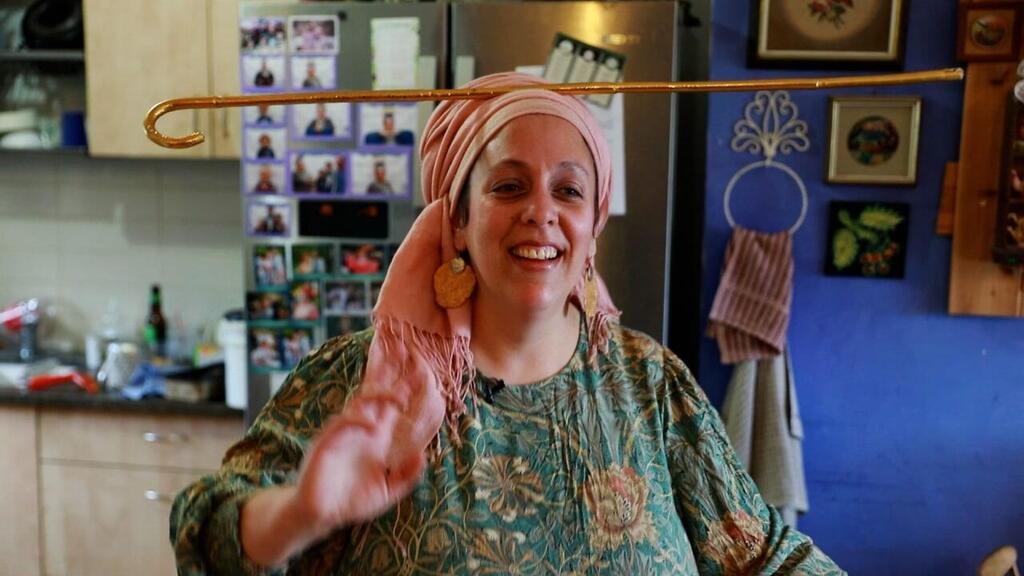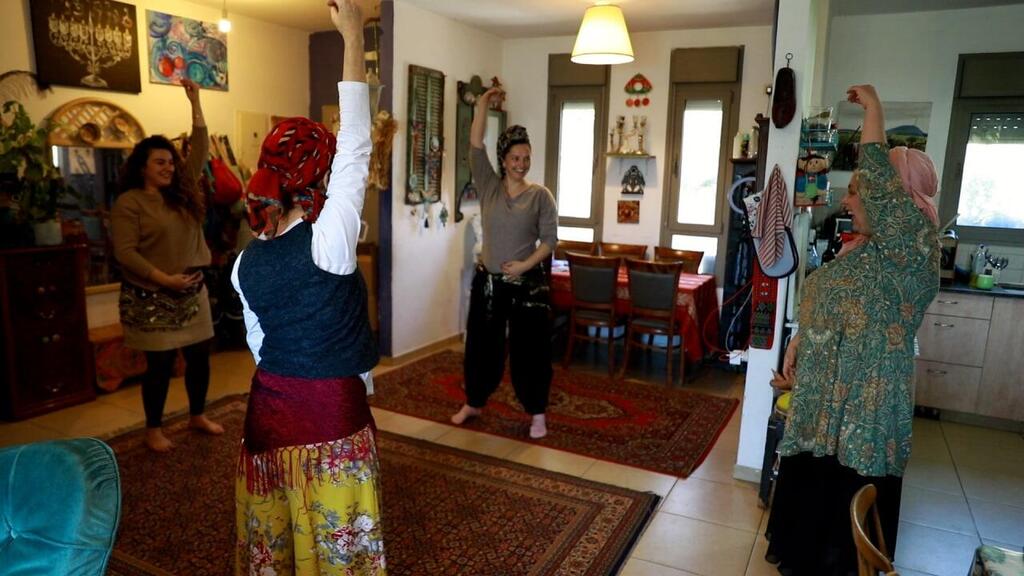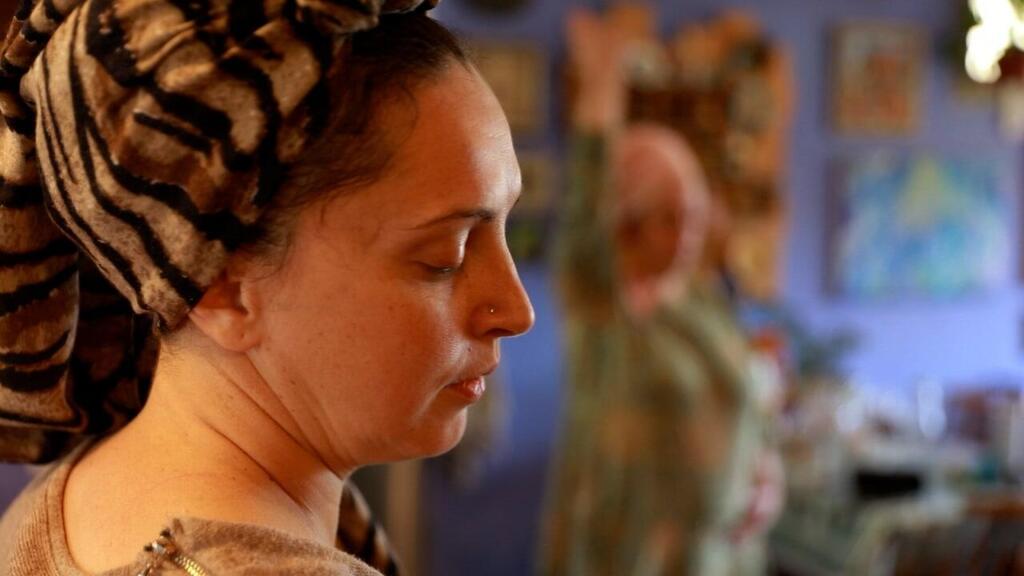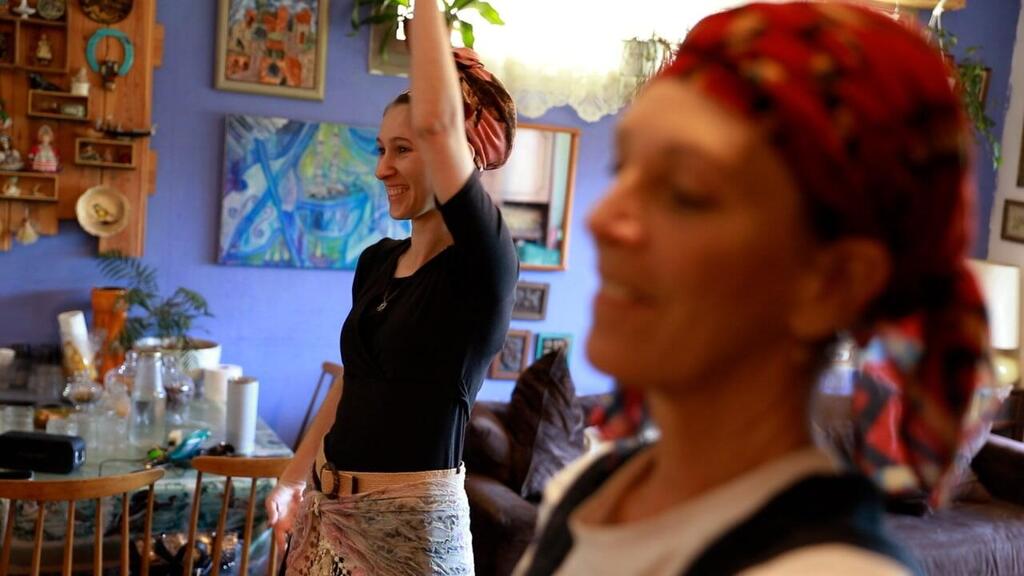Hani Cohen Yehonatan, 38, is the mother of four beautiful children. She leads a religious life with her family in the West Bank settlement of Kedumim. But what does she do for a living? Well, she's a belly-dance teacher, but despite her profession's implicit sexual nature, she does not see it collide with her conservative beliefs.
"I don't feel like there is a contradiction here," she states. "We're not performing in front of men, so I've never run into issues. The dance is first and foremost for us. There once was a woman that told me she wants to perform in front of her husband. I said, do it for yourself first, for your body, and if you want to add another layer, that's amazing. But first of all, do it for you."
Cohen Yehonatan explained how belly dancing is perceived in the eyes of the religious community. "People know belly dancing as a very revealing type of dance, very sexual, and that's a stigma that I came to tackle. I had a student who once asked a rabbi if she could learn belly dancing, and he told her she couldn't on the grounds that it wasn't modest."
This tension between female modesty and love for the art has inspired Hani's journey.
"I feel like I need to clarify what's modest and what's not modest in the hips, and if there needs to be a good reason to move them. Because what is modest in the hips? Only birth? Is going to the bathroom modest?" Hani elaborates.
"If dance strengthens the hips for birth, is it modest? So moving is only modest when related to bearing children? But what if a woman suffers from menstruation pains? If a woman isn't able to have sexual relations, she needs to go ask the rabbi if she's allowed to do belly dancing, because it might help her? These are questions that concern them. The questions are more important than the answers."
Cohen Yehonatan grew up in a religious-Zionist household in the Golan Heights and was educated in religious institutions. "I didn't get much physical education. I experienced the opposite, body suffocation," she shares.
"Because I was taking part in matchmaking and I wanted to maintain a figure, I tried all kinds of classes, but I failed or fell in all of them, so I tried belly dancing," she said with a spark in her eyes.
"I remember opening the door to the belly dancing studio, and it was my first time seeing a group of happy women. There were women of all ages, from 23 to 70, I was the youngest there. There were pregnant women, religious and secular women, wearing wigs or wearing pants. After a single lesson, I felt like a person who has seen the light and had to pass it on."
At that moment, a seed was planted in Cohen Yehonatan's mind, though she was still ashamed to admit it: "I wanted to become a dancer, I wanted to learn to dance, and I wanted to give hope to women like me, that grew up without a body [in the metaphoric sense]." She was scared to pursue these thoughts, so she started to work as an English teacher. "I quickly understood that it was not for me, and immediately after the wedding, I left teaching and did a career shift."
Cohen Yehonatan has now been teaching holistic belly dancing for eight years. She teaches four times a week - three times in her living room, and once a week at the school for dance in Itamar, an Israeli settlement located in the West Bank's Samarian Mountains.
"Before I started giving lessons in my living room, I was worried about dirt and mess," she shares, "and I remember that I was really nervous before everyone arrived.
All of the sudden, in the middle of the lesson, someone asked me, 'Hani, why do you have a half-eaten carrot on your shelf?' One of the kids took a bite and forgot to throw it out, and because the house is filled with decorations, we didn't notice."
Throughout the session, Hani's husband and four kids stayed in their rooms. "It's important for me that the women that arrive feel comfortable, so my husband knows he's not allowed to be here, not only throughout the duration of the lesson but also when they come in. It's a very personal and very intimate thing. It's not easy for everyone to show up, so if they do come - maybe they don't want him to know that they're here. So I respect that."
Hani explains how the homey environment influences the dynamics of the lesson. "All of a sudden, when there are no mirrors, even I as a teacher have nowhere to escape to, and I have to dance directly in front of my students. In the beginning, it was difficult, and today even in the studio, I gather courage and turn my back to the mirror."
This way the students also have to stand one in front of another. "Some of them are really concerned that it'll embarrass them in the beginning, so they stand in the hall or the kitchen. Most of the time, the embarrassment fades away. Sometimes, we open a freestyle circle, and when the girls stand in front of each other, they communicate and talk."
According to Hani, "women that come from a very closed culture are able to open up to belly dancing much more easily, which is interesting because they haven't heard of it and they don't know what it that is."
Cohen Yehonatan states that even in the days of the Bible, Jewish women danced. "I believe that in the ancient world, everyone danced this way, even Jewish women during the Exodus from Egypt, after the partying of the Red Sea."
"Today in our culture, we're always receiving messages to shrink, collect, and hold ourselves together. One woman once told me. 'Just don't let them see my belly'. And in belly dancing, the first thing is to let go, everything is loose - and the farther you go, the better," she laughs.
A variety of women come to learn from Hani, from all different shades and hues of the religious spectrum. Owing to the diverse backgrounds from which Hani's students hail, interesting topics come up during her lessons, including pregnancy, birth and personal relations. "I feel that this place and this movement opens a place in the soul that doesn't come up in other places, especially in the feminine context."


